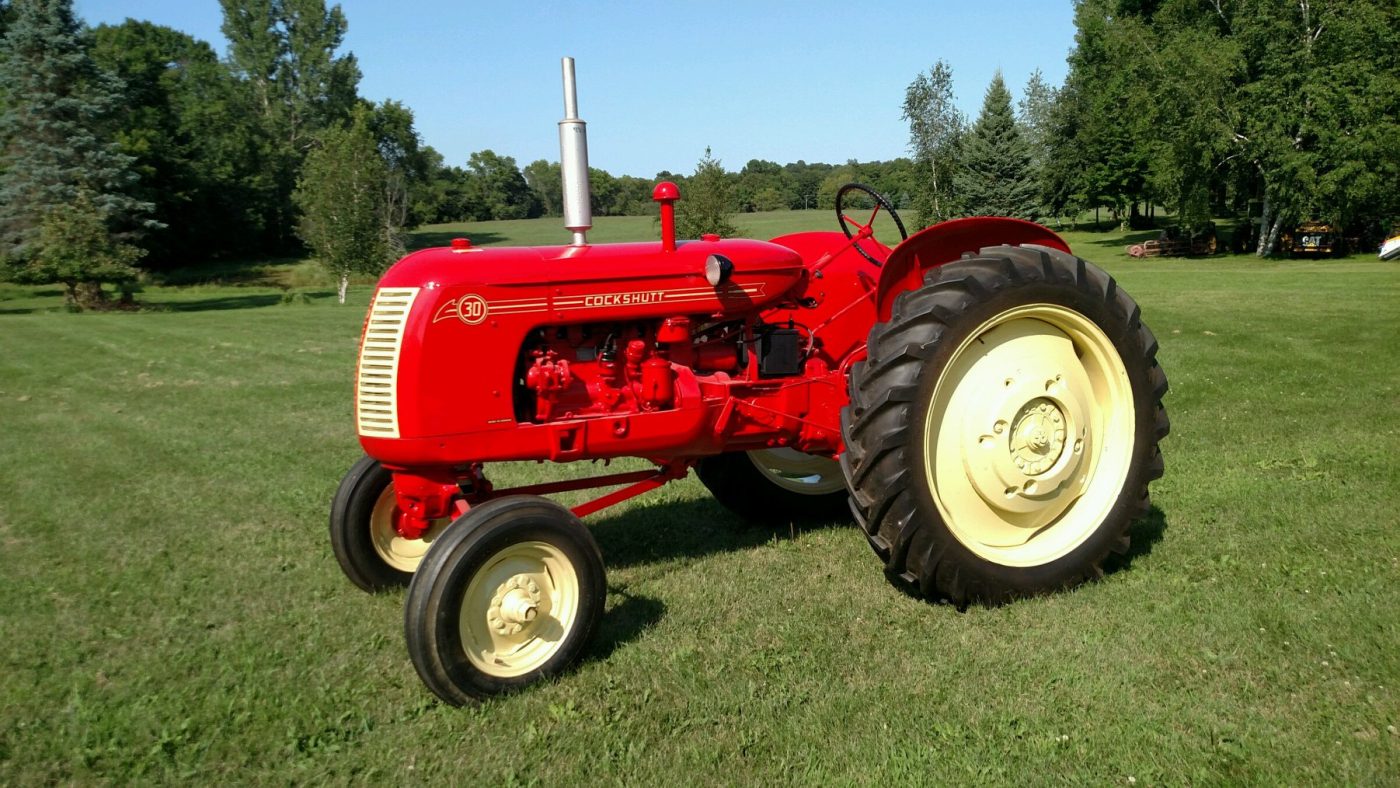YETRAC
Cockshutt Plow Company: A Canadian Agricultural Machinery Legacy
Cockshutt Plow Company: A Canadian Agricultural Machinery Legacy
The Cockshutt Plow Company, known as Cockshutt Farm Equipment Limited between 1957 and 1962, was a prominent Canadian agricultural machinery manufacturer based in Brantford, Ontario. With a history dating back to 1877, the company made significant contributions to the agricultural and tractor industry. This article explores the history of the Cockshutt Plow Company, its role in the World War II effort, its line of tractors, and its eventual integration into the White Motor Company.
A Legacy Begins
The origins of the Cockshutt Plow Company trace back to 1877 when James G. Cockshutt founded the Brantford Plow Works. In 1882, the company was incorporated under the name Cockshutt Plow Company. After the passing of James Cockshutt, his brother William Foster Cockshutt assumed the role of president, succeeded by another brother, Frank Cockshutt, in 1888. In 1910, the youngest of the brothers, Henry Cockshutt, became the company’s leader.
Quality Designs and Expansion
The company became renowned for its quality designs and products, ultimately becoming a leader in the tillage tools sector by the 1920s. Despite not having its own tractor design initially, in 1929, Cockshutt formed a distribution agreement to provide Allis-Chalmers and United tractors. In 1935, Cockshutt expanded its offerings by adding the Oliver tractor line.
Contributions to World War II
During World War II, Cockshutt’s Brantford factory underwent a transformation, operating as the Cockshutt Aircraft Division. The factory was involved in the manufacturing of undercarriages for various British bombers, such as the Avro Lancaster Mk X. It also played a vital role in producing plywood fuselages and wings for training aircraft like the Avro Anson. Cockshutt Munitions Division, within the same Brantford factory, manufactured artillery trailers and shells of different sizes. The workforce grew substantially during this period, with a significant number of women contributing to the war effort.
In the midst of World War II, Cockshutt embarked on designing its own tractor, the Cockshutt 30, which was officially introduced after the war’s end in 1946. This tractor was significant for Canada as it was the first modern production tractor manufactured in the country. The Model 30 was notable for its vermillion red color with cream white wheels and lettering, and it was powered by a 153-cubic-inch engine produced by the Buda Engine Company of Harvey, Illinois.
Expansion into the United States
Cockshutt had ambitions to enter the U.S. large farm tractor market, but it lacked a sales network in the United States. To address this, in 1945, the company signed two marketing agreements, one with the National Farm Machinery Co-operative (NFMC) in the midwestern United States. Under this agreement, the Model 30 tractors were sold under the “Co-op” name and painted entirely “pumpkin orange” with black lettering, re-designated as the Co-op E-3 tractor. These tractors were wholesaled to various local farmer-owned co-operatives.
To promote the Model E-3 tractor’s sales in the United States, Cockshutt sent one of the tractors to the University of Nebraska for testing, which revealed its impressive performance. This marked the beginning of Cockshutt’s presence in the U.S. tractor market.
Diverse Tractor Lineup
Cockshutt continued to expand its tractor lineup by introducing the Cockshutt 40 (3-4 plow), Cockshutt 20 (2-plow), and Cockshutt 50 (4-5 plow) in subsequent years. The company also introduced the Cockshutt Blackhawk 35, covering the mid-range of the market with 42.5 horsepower.
In 1958, Cockshutt unveiled a new line of tractors, including the Model 540, 550, 560, and 570. These tractors, designed by renowned automobile designer Raymond Loewy, set new standards in modern styling. The range covered a spectrum of power outputs, from 30 to 65 horsepower. The Model 580, a 100-horsepower unit, was also introduced but only in limited numbers.
Acquisition by White Motor Company
In 1958, the company underwent a change in ownership when it was acquired by English Transcontinental, representing an American investment group that would later evolve into White. The company’s name was changed to Cockshutt Farm Equipment Limited. In January 1962, White Motor Company acquired Cockshutt.
Under White’s management, production in Brantford ceased, but the Cockshutt brand continued to exist. From 1964 to 1969, the **50 series tractors, ranging from 1450 to 2150, were produced and were identical to Oliver tractors of the same model number, manufactured in Charles City, Iowa. These tractors were distinguished primarily by their paint color and the new Cockshutt logo.
The End of an Era
White established White Farm Equipment in 1969, merging the acquisitions. By 1975, all three brand names—Cockshutt, Oliver, and Minneapolis-Moline—were discontinued, and White equipment with silver paint became the standard. The Cockshutt name gradually faded from the agricultural machinery landscape.
The Cockshutt Plow Company’s legacy in Canadian agriculture and the tractor industry remains significant, and its history represents an era of quality design, expansion, and international influence in the farming world.

